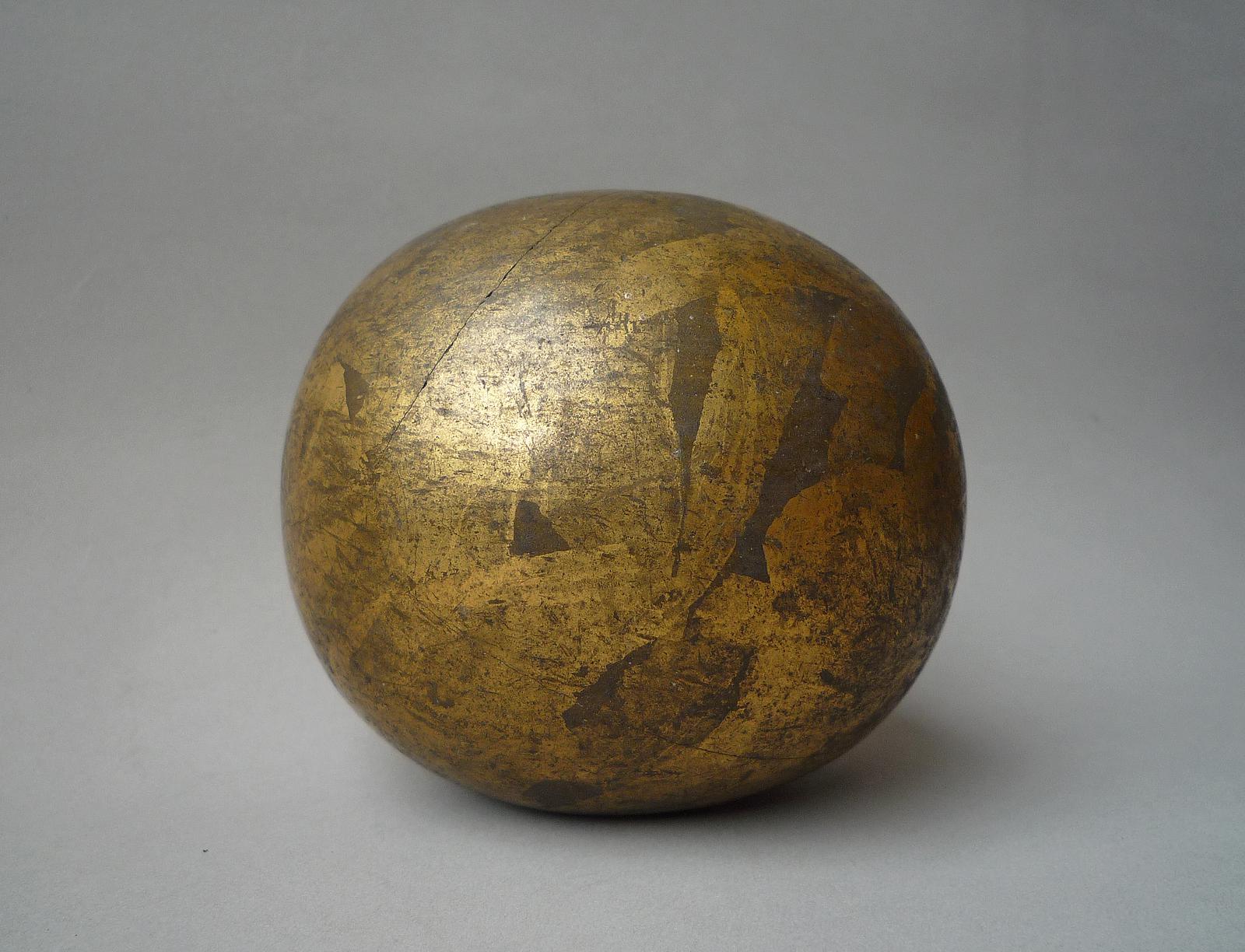Gallery:
India
Room / Case / #
33 / 64A / 1,2,3
State of the art medicine
Medicine: All peoples hoped exotic products would cure their ills. A Goa stone was a real or man-made gall stone that was considered to have medicinal and talismanic properties and was exported to apothecaries in Europe from the mid-16th to 18th century. The ornate, solid gold or gilded cases were believed to enhance their medicinal properties. Goa stones, manufactured by Jesuits in Goa, were created by combining organic and inorganic materials including hair, fossil shark teeth, shells, tusks, resin, and crushed gems, then shaping the materials into a ball and covering it with gilt. Like bezoar stones – indigestible stuff found in animals stomachs – Goa stones were thought to prevent disease and cure poisoning. They could be administered by shaving off small pieces into a drinkable beverage like water, tea, or wine. The stones were typically oval shape around 9cm in diameter.

